How to Design an E-commerce Website That Converts
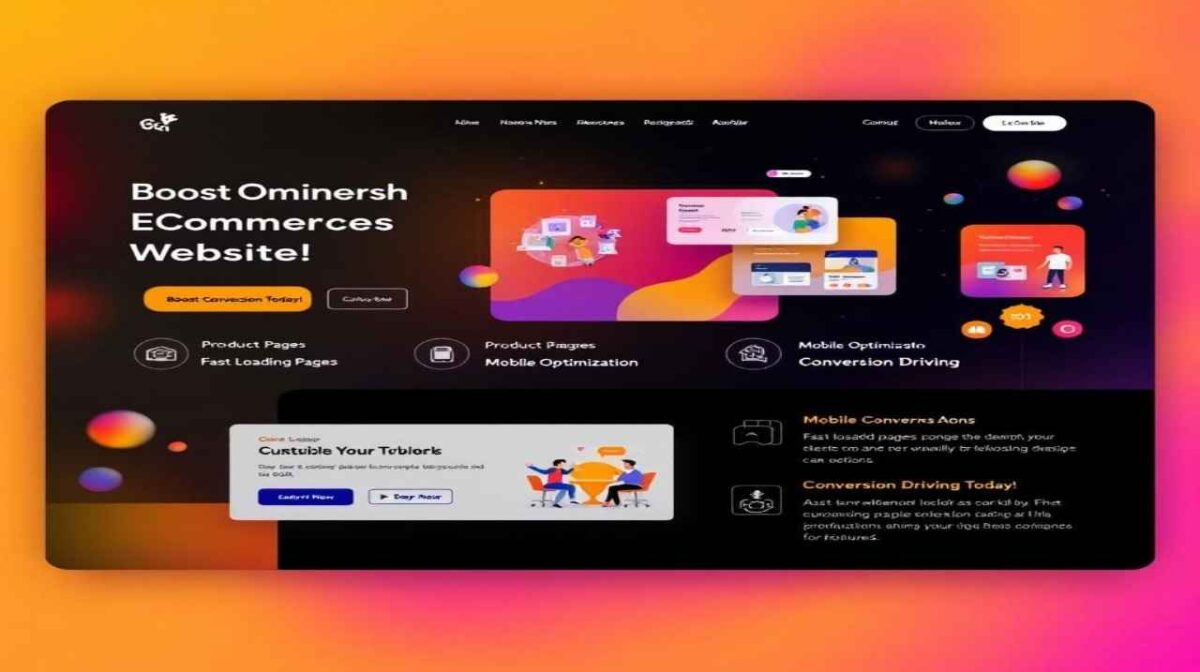
Your e-commerce site s not just a pretty face for your store; it’s a heavy duty sales engine. But here’s the thing: Many websites look beautiful, but they don’t convert! The difference? Strategic design approaches that prioritize the user experience, function, and conversion elements.
This guide explains best practices for designing an e-commerce website that goes beyond getting traffic. We’ll explain how to increase your site’s speed, improve user experience, how your layout can impact sales and so much more!
E-commerce Website Optimization
What is E-commerce Website Optimization?
E-commerce website optimization involves the optimization of your website in terms of its technical performance, how it looks and usability to ensure that visitors go through a smooth journey as they interact with your e-commerce website. A highly optimized website means faster load times, better search engine rankings, and a structure that instinctively leads users to take the action you want them to take, such as buy your product.
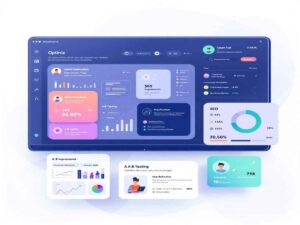
Key Strategies for Optimization:
Speed Optimization:
A fast-loading website is essential. According to studies, a one second delay in page load time leads to 7% loss in conversions. Techniques to optimize speed include:
- Saving images with reduced size in kilobytes.
- Less garbage/spaghetti code and external scripts.
- Using of the Content Delivery Networks (CDNs) to efficiently deliver the content.
Search Engine Optimization (SEO):
Better visibility on search engines translates to more high-quality traffic. To boost SEO, use:
- Relevant words in product titles, description and meta tags.
- SEO-friendly URLs for all product pages.
- Valuable content, such as blogs or resources, to lure in potential customers looking for answers.
A/B Testing:
Try different titles, product pictures and call-to-action buttons on your website versions. This analytic-oriented method allows you to learn the most responsive angle to the audience and iterate your design for higher performance.
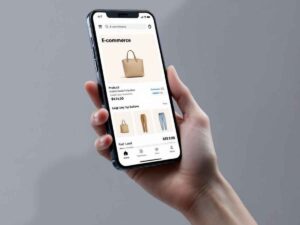
Conversion Rate Optimization (CRO)
What is CRO, and Why Does It Matter?
Conversion Rate Optimization (CRO) centers on improving the % of visitors to your site who take action the action you desire to obtain that could be a purchase, a newsletter sign up or items added to the cart. CRO makes sure your website is getting the most from its traffic.
Best Practices for CRO:
Streamlined Checkout Process:
Make it super easy for them to buy by reducing the number of form fields and providing guest checkout. The smoother the purchase process, the more chance users will buy, and are less likely to leave their carts empty.
Personalized Recommendations:
Use AI-driven solutions to analyze customer activity and suggest products according to viewing history. For instance, Amazon’s “frequently bought together” section is a huge driver of additional sales.
Cart Abandonment Solutions:
Combat this common issue by:
- Sending reminder emails.
- Providing encouragements such as a discount for their purchase.
- Highlighting urgency with limited-time offers.
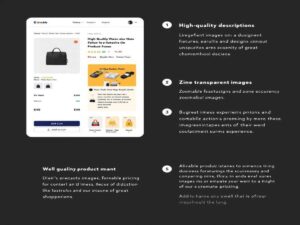
User Experience Design for E-commerce
Why is UX Design Critical?
Remember good UX design can be the difference in a browsing customer and a paying customer. It makes it easy for your users to find what they want and purchase it with confidence.
Key UX Design Elements:
Clear Navigation:
Get shoppers faster to what what they want with clean menus and easy search. Dropdown menus and category and price and benefit filters make shopping easy.
Responsive Design:
With more than 50% of e-commerce traffic originating from mobile devices, responsive design is a must-have. Make it responsive so that it will fit into any screen and compatible for mobile and tablet.
Visual Hierarchy:
Use design elements strategically to guide visitors’ eyes. For example:
- Highlight CTAs with bold colors.
- You must use large font sizes for important information, such as prices and discounts.
- Provide clean designs and don’t crowd the user.
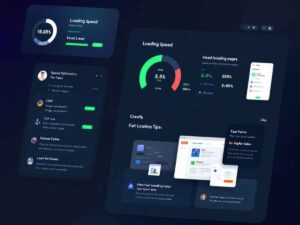
Effective Product Page Design
Why are Product Pages Important?
Your products pages are where the conversions happens. A well-designed product page can be all it takes for someone to browse become a buyer.
Essential Product Page Features:
High-Quality Images:
Use zoomable images to feature every angle of your product. Better imagery builds trust and allows the customer to picture the product in their life.
Detailed Descriptions:
Avoid generic descriptions. Instead, focus on how the product solves your customer’s pain point or integrates with their life.
Transparent Pricing & CTAs:
Explicitly mention the price and have big call-to-action buttons like “Add to Cart” or “Buy Now.” And make them pop with contrast and placement.
The Role of Calls to Action (CTAs) in E-commerce Websites
The calls-to-action (CTAs) are strong and a good call-to-action is crucial for any conversions. They act as a homebase to direct your customers to take the next step, whether it’s making a sale or joining your newsletter.
Tips for Effective CTAs:
- Visibility:
Put your CTAs in the places where they are most likely to be noticed on your website – the top of the page, in the product descriptions, pop-ups and such.
- Action-Oriented Language:
Use actionable phrases like:
- “Shop Now.”
- “Get 10% Off Today.”
- “Add to Cart.”
- Create Urgency:
Employ wording such as “Limited Time Offer” or countdown timers to push people to act fast.
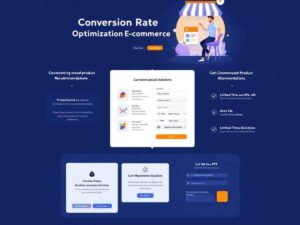
Designing Mobile-Friendly E-commerce Websites
Why Mobile Optimization is a Priority:
It’s a mobile world when it comes to online shopping, and consumers are using their phones to browse and buy. When it comes to conversions, the website’s mobile compatibility bears as much weight as the user experience.
Best Practices for Mobile Optimization:
Touch-Friendly Navigation:
Make sure buttons/icons/links and navigation is easy to tap and use on small screens.
Fast Load Times:
Compress images and reduce your code to have your site load faster, even on slow networks.
Simplified Checkout:
Who wants to do 30 steps to checkout? I can also use apple pay, google pay.
Website Speed and Performance
How Speed Impacts Conversions:
If your page takes just one second longer to load, research suggests you could experience a 7% loss in conversions. The higher your website loads, the more engaged the customers remain and therefore results in increased overall satisfaction.
Speed Optimization Tips:
- Leverage caching and CDNs to serve content more quickly.
- Compress pictures and shrink file sizes.
- Avoid the use of third-party JavaScript libraries which are too heavy.
Visual Design for Online Stores
An aesthetically pleasing, e-commerce website instils confidence in potential customers, encouraging them to purchase goods online.
Key Visual Design Tips:
Consistent Branding:
Use the same logo, colors and fonts throughout every page.
Whitespace:
Create some breathing space in your web design with well-spaced elements that give a layout consensus.
Eye-Catching Elements:
Call attention to discounts, promotions or new items with banners and graphic elements.
Build a Website That Drives Sales
All the parts of your e-commerce website are important when it comes to conversions. Easily navigable sites, fast-loading pages — these are just a few ways following these tricks can get your site clicking, and your business thriving.
Ready to turn your e-commerce site into a conversion cranking machine? Schedule a free consultation with us today and start using these effective techniques!
Frequently Asked Questions (FAQ)
Why intuitive navigation is very important for an e-commerce site?
Effortless navigation allows visitors to quickly find what they’re looking for, enhancing your users’ experience and interaction with your site and keeping them coming back!
How fast-loading pages affect sales?
Literally nothing annoys customers more than slow-loading pages and nothing skyrockets bounce rates. When pages load quickly, users are more engaged, leading to higher site conversions.
How can you present a discount or offer in an appealing way?
Graphic banners, getting easy-to-read text that stands out and clear CTAs are just 2 of the best ways to display special promotions that can get potential buyers shopping.
Are these approaches applicable to small e-commerce businesses?
Absolutely! These tactics are meant to improve the website and user experience to improve sales for companies big and small.
What can I do to begin implementing these e-commerce website enhancements?
You could begin by looking at how your website might be failing, what one thing you could do to make a difference, and doing something about it, such as improving navigation or loading times. Call us now for a no-cost consultation to provide direction!





